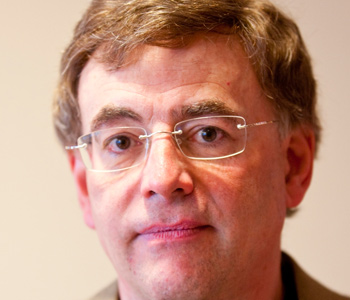
The standard view of medicine holds that observant clinicians discover diseases in nature. Accordingly, psychiatrists are no different from other doctors. They, too, discern forms of pathology arising from dysfunctions in our universal human nature. Psychiatric experts, relying on clinical observation and research, develop the diagnostic criteria that best describe the disorders they have identified. Mental disorders are diseases of the brain, on a par with diseases of the immune system, circulatory system, and so forth.
This view implies that mental disorders are timeless maladies, originating in aberrant biology, that occur across cultures and throughout history. Just as success in chemistry entailed discovery of the elements that constitute the periodic table, success in medicine, including psychiatry, will result in the discovery, description, and explanation of the mental illnesses that afflict humanity.
Not everyone buys this line. Social constructionists hold that cultural factors shape the experience and expression of mental disorders in ways impossible for most diseases. Indeed, cognitive and emotional symptoms are constitutive of mental illness, and cultural factors affect how we think and feel. This implies that at least some disorders may not be ahistorical entities whose essence is invariant irrespective of cultural context.
Scrutiny of the connection between culture and mental illness suggests a nuanced version of social constructionism. For some mental disorders, culture barely penetrates the surface, whereas it greatly shapes others and outright creates still others.
Some conditions arise from a core psychobiological dysfunction, scarcely affected by cultural context. For example, Western sufferers of panic disorder misinterpret bodily sensations, such as skipped heartbeats, as signs of imminent catastrophe, such as cardiac arrest. This process heightens fear, creating a vicious circle that culminates in panic. Cambodian sufferers experience the same vicious circle of sensation, misinterpretation, fear, and panic, but their focus of concern, shaped by culture, differs. Believing that wind as well as blood travels throughout the circulatory system, Cambodian patients react catastrophically to sudden neck stiffness, for example, believing that it signifies wind blockade that may cause a fatal stroke. The psychobiological dysfunction in panic disorder seems invariant, whereas the cognitive focus of concern varies by culture.
In contrast, culture has greatly shaped how soldiers have experienced and expressed war-related psychiatric illness throughout history. Although some symptoms, such as anxiety and nightmares, occur repeatedly throughout history, others occur only in certain places and times. Although posttraumatic stress disorder first appeared in the DSM-III following the Vietnam War, many scholars believe that victims of shell shock and battle fatigue in World War I and II, respectively, actually suffered from PTSD, but under different names.
Inspection of the historical record tells a different story. Hallmark symptoms of PTSD, such as vivid, sensory recollections of trauma (“flashbacks”), were all but nonexistent among psychiatric casualties of combat until the Vietnam War. Conversely, pseudoneurological symptoms, such as motor paralysis, were common among shell shock victims, but nearly disappeared in later wars. The intersection of culture and history furnishes a range of ways that people experience and express the psychiatric consequences of combat. This does not mean that PTSD is not “real.” Rather, it implies that the sources of its reality are not purely biological.
Finally, some syndromes appear to be almost entirely a product of historical and cultural circumstances, as multiple personality disorder (MPD) illustrates. An epidemic of MPD swept through North America during the 1980s following the immense success of the book and movie about Sybil, a woman whose MPD allegedly arose as a consequence of having suffered horrific childhood abuse at the hands of her psychotic mother. A theory inspired by this case held that MPD patients develop alternate personalities to serve as repositories for traumatic memories too intolerable for their “host” personality to entertain consciously.
At it turns out, most cases of MPD arose within the context of psychotherapy itself, apparently a product of hypnotic memory recovery sessions, plus media portrayals of the disorder. When patients began recalling bizarre, implausible traumatic “memories” of satanic ritual abuse, cannibalism, and infant sacrifice, only to retract them later, MPD therapists became the target of malpractice suits. The cultural niche supporting MPD as an idiom of distress dried up, and the epidemic ended. In an ironic coda to this strange episode, recent scholarship has shown that Sybil was an artistic, imaginative, only child who had not suffered abuse at the hands of a psychotic mother.

Richard J. McNally is Professor and Director of Clinical Training in the Department of Psychology at Harvard University. Most of his over than 330 publications concern anxiety disorders—posttraumatic stress disorder, panic disorder, phobias, obsessive-compulsive disorder. He is the author of two books, Panic Disorder: A Critical Analysis, Remembering Trauma, and What Is Mental Illness?, featured in his Rorotoko interview. Richard McNally served on the American Psychiatric Association’s DSM-IV PTSD and specific phobia committees, and is an advisor to the DSM-5 Anxiety Disorders Sub-Workgroup. He is on the Institute for Scientific Information’s “Highly Cited” list for psychology and psychiatry, among the top .5% of authors worldwide in citation impact.